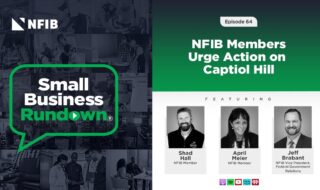February 23, 2022 Last Edit: June 5, 2025
NFIB California Podcast: What You Need to Know About the New COVID-19 Supplemental Paid Sick Leave Law
A new COVID-19 supplemental paid sick leave law took effect February 19 for businesses with 25 or more employees. Furthermore, it’s retroactive to January 1.
California has been to this dance before. So how is this new law different from the last, which ended in September of last year?
“Now there are two different, 40-hour buckets,” said Ben Ebbink, an expert in the state’s labor and employment laws. “The first bucket is essentially the same as the last time. It’s up to 40 hours for the same COVID-qualifying reasons as the last time. Then, there’s a second bucket up to an additional 40 hours in a situation where an employee tests positive for COVID or they’re caring for a family member who tests positive for COVID.”
Ebbink, a partner in the Sacramento office of Fisher & Phillips LLP, and a principal of FP Advocacy LLC., brings two decades of experience in labor and employment law to the firms he counsels, including 15 years as chief consultant to the California Assembly Committee on Labor and Employment. He has played a key role in virtually every major labor and employment issue to come before the Legislature during his tenure, and earned a reputation for his integrity, ability to work with diverse stakeholders on all sides, and as a skilled problem-solver.
Were the distinctions between the two buckets that simple. In a 20-minute conversation with NFIB California’s chief legislative advocate, Kevin Pedrotti, Ebbink discusses some of the things employers need to know a little more in detail, such as:
- How does an employee qualify?
- Does an employee have to exhaust other forms of paid leave first?
- Vaccine recovery time
- Exclusion pay
- Calculating the rate of pay
- Regular rate of pay calculation
- The maximum amount of pay in one day
- The aggregate amount of pay
- Pay sub requirements
- Tax credits to offset costs?
“There may be some other tax credits that may help out overall but there are not specific, dollar-for-dollar tax credits for this leave,” said Ebbink. Click the arrow below to listen to this highly informative podcast. And, click here to see all prior podcasts.
NFIB is a member-driven organization advocating on behalf of small and independent businesses nationwide.
Related Articles














